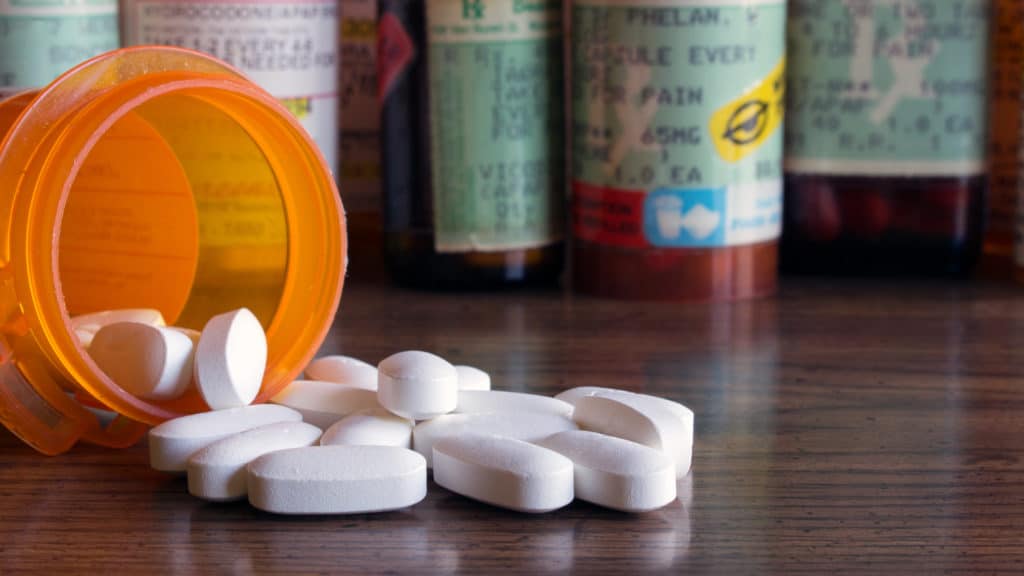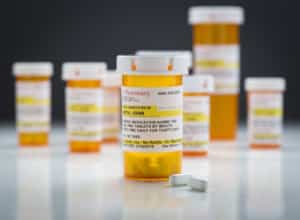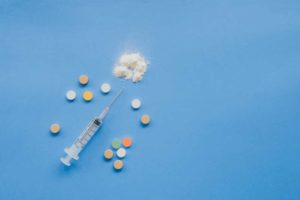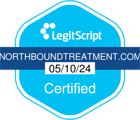America is in the middle of its deadliest drug crisis ever and drug and alcohol addiction treatment communities find themselves facing a new force that has landed itself in a category all of its own, just by its sheer increasing prevalence. The prescription drug epidemic today is one of the largest and growing contributors to drug addiction and abuse.
The prescription drug epidemic, through misuse and abuse, is very simply defined as when a person acquires and consumes (or utilizes) a medication deemed as a “controlled substance” without instruction from a doctor or health care professional, other than for its intended use.
Due to the ever-growing pharmaceutical advances and readily available prescription drugs are handed out by medical professionals in good faith, there are too few restrictions on pain management, as well as psychological disorder treatment by way of prescription drugs, leading to abuse and addiction. That said, there is a significant number of users who are also able to acquire prescription drugs by means of theft, illegal sale or by mishandling of such products.
Unfortunately, the end of such a devastating era is far from sight, and therefore, now comes down to the dedicated rehabilitation centers. This requires the work of doctors and staff, to create an open dialogue to address this prescription drug crisis for each person. With the mission of informing and rehabilitating those who have fallen victim to such an outbreak, knowledge and oversight must be provided in order to contain and prevent the growth of what is being known as the prescription drug epidemic.
Prescription Drug Epidemic: Age and Demographics Being Targeted
We know that people of all ages are being impacted by the prescription drug epidemic – it affects young children all the way to the senior citizen community. However, this invasive public health crisis is impacting some groups of people to a very significant degree. Many of the groups ranking among the highest being impacted by availability might just surprise you, giving certain groups the opportunity to continue the misusing drugs intended for use only by obtaining a prescription, under doctor supervision. Because of the lack of distinction and awareness, those needing the most drug rehabilitation go unidentified and untreated.
In general, any single person seeking a doctor’s assistance to achieve relief from a psychological disorder or any type of physical or emotional pain is faced with a decision. It is not whether or not to simply be presented with the means to acquire prescription medication, but rather only which prescription drug and dose fits the individual’s needs.
For starters, you might not think that Grandma and Grandpa are struggling with a prescription drug abuse problem. However, in reality, the Substance Abuse and Mental Health Services Administration (SAMHSA) show that 3 in 10 people between the ages of 57 and 85 are using five or more prescription drugs daily to treat multiple medical diagnoses.
On the other side of the age spectrum, according to the National Survey on Drug Use and Health (NSDUH), findings show that upwards of 5,700 young adult aged persons reported self-medication in recent years with the use of prescription drugs without ever having been evaluated by a medical professional.
These outrageous statistics are seemingly ever-growing in number and giving good reason to classify these means of abuse as nothing short of a prescription drug epidemic that needs to be taken very seriously.
Motivation and Means to Abuse Prescription Drugs
Many times, a person may misuse their own prescription drugs in a way that is not instructed by their doctor. In other words, some people take more doses than their doctors recommended. Some may use the medication when no symptoms are present. In other cases, people may use someone else’s medication.
Drug abuse that deserves recognition within the prescription drug epidemic, can also occur when people mix medicine with alcohol or other drugs. Harmful, or even deadly, interactions between medications can occur, and in many circumstances, can cause addiction or overdose accidentally.
Prescription Drug Abuse: It Isn’t Always Intentional
Biology and aging play a significant part to the degree of harmfulness because one medication may present its usefulness and side effects differently, from one person to another. As one grows older, changes in the physical body, internal as well as external, may alter the body’s ability to use and discard medicines properly. This could suggest that an older or growing individual is more susceptible to becoming addicted to or having unexpected side effects from a prescription drug at even a smaller dose other than another individual over a period of time.
Needless to say, but important to reiterate, it is imperative that every person takes care to manage medications responsibly to avoid contributing to the rising numbers of those affected by the prescription drug epidemic.
Prescription Drug Epidemic: Persons at Higher Risk for Exposure
As more information is gathered and studied with the intention of putting an end to the prescription drug epidemic, identifying and diagnosing the misuse or addiction of such medications is a tedious and delicate matter. In young adults, it is becoming increasingly acceptable to share and enjoy any conscious-altering substance between one another.
Thus, placing pressure upon their peers to ensure one’s anonymity of supply and demand. Digging in a bit deeper, studies provide insight that allows treatment centers to focus on targeted groups, giving-way a better understanding of how each group is affected. These groups include the middle-aged, career-oriented, senior citizens and elderly, overwhelmed mothers, children, young adults, and even how doctors or caregivers contribute to the uprising in the prescription drug epidemic.
Prescription Drug Epidemic: Middle-Aged, Career Oriented Individuals
Middle-aged persons with strenuous or demanding jobs and careers that require optimal functioning, both physical and cognitive, are susceptible as well.
Some, fall into cycles of misuse with the intention of boosting performance. Or they may use these drugs in order to reduce the pressures of the workforce. Prescription drug abuse often goes unnoticed or mistakenly identified as goal-oriented. People often label individuals in this situation as an overly capable individual, instead of as an addict.
Prescription Drug Epidemic: Senior Citizens and the Elderly- Left to Their Own Devices
In mature or senior adults, just the opposite is noted as the cause of dependency or abuse. One possibility is the inevitability of social isolation. Persons mid to late 60’s are beginning to discuss and adjust for retirement, separating themselves from the routine workforce and its socialization. Being located a distance from family members, or residing alone, prescription drug dependence and abuse may go unnoticed or unobserved.
With regards to the elderly community, as peers and family members pass away or just become more unavailable for socializing, the prescription drug epidemic skyrockets privately, allowing for one to pursue overwhelming dependency, even unknowingly.
Prescription Drug Epidemic: Mothers- The Weight of the World
Battling issues that exist in regard to the prescription drug epidemic, we are faced with yet another surprising demographic. It requires special attention. It is important to be informed that both young and older people face difficulties. These challenges can contribute to the ongoing prescription drug crisis. It is also important to focus some attention on an underestimated group of individuals. They are suffering from dependency too, and oftentimes do so in secret. This delicate control group in need of assistance and attention is dedicated specifically to mothers.
While of course, not every mother out there is abusing their prescription drugs, many are. The stress of daily responsibilities makes them feel as though they are carrying the world on their shoulders. As a result, many mothers are turning to the use of stimulants to get them through the day. Misusing these kinds of drugs can make mothers feel as though they can finish everything on their to-do list. This is extremely dangerous, as stimulant abuse, in particular, can impact sleep patterns, mental health, and addiction development potential.
Prescription Drug Epidemic: Children and Young Adults- It’s Never Too Soon to Start
Last but not least – children. Yes, you read correctly. Children between the ages of 12 and 17 are making headlines for their increase in prescription drug abuse. In fact, the National Survey on Drug Use and Health (NSDUH) shows that within the past 10 years, more kids between these ages are abusing prescription drugs than they are illicit street drugs like cocaine or heroin. This level of abuse can be highly dangerous. This is especially because children within this age range do not have fully developed brains. Continued prescription drug abuse can cause brain damage and lead to poor development. It can also negatively affect cognitive, behavioral, and social skills.
Prescription Drug Epidemic: Doctors, Medical Staff, and Caregivers- Making the Right Call
Doctors and medical staff at times present with hesitation to acknowledge or diagnose someone suspected of misusing prescription medications. Reasons for this behavior could be by avoiding the conception as being labeled as bias, regarding age or socioeconomic factors.
Their family members, caregivers, and friends can also contribute to the growing prescription drug epidemic. Simply believing that their elderly loved ones should use their own judgment regarding alcohol and medication consumption can be dangerous.
Thereby, condoning or ignoring irresponsible self-medication as a matter of reverence and respect. Unknowingly, these behaviors can be contributing to addiction and abuse, negatively impacting the health and wellness of senior and elderly persons. There still remains a stigma against taking potentially harmful medications away from an individual insisting the medication’s assistance is important to them.
Prescription Drug Epidemic: Signs and Symptoms of Dependency and Withdrawal
Having adequate knowledge of the warning signs and behaviors exhibited by a person abusing prescription drugs can make all the difference in the world to starve the fight in the prescription drug epidemic.
The most common are as follows:
- Constipation
- Nausea
- Euphoria (feeling high)
- Slowed or difficulty breathing
- Drowsiness or extreme fatigue
- Confusion
- Poor motor skills or lack of coordination
- Requesting an increase of dosage in existing prescriptions
- Hyperplasia (worsening sensitivity to old or new pain when given higher doses of prescription medications
- Inability to walk steadily
- Slurred speech
- Inability to concentrate or hold conversations
- Issues with memory or unusual repetition
- Seemingly more alertness
- Irregular heartbeat
- High blood pressure
- Increased body temperature
- Lack of appetite
- Insomnia
- Agitation
- Anxiety
- Paranoia or delusions
Behaviors to Identify Prescription Drug Abuse: Asymptomatic
Abuse of one or more prescription drugs, even by someone close to you, may be difficult to identify. In some instances, there are few or no physical indicators that a person may have a drug addiction abuse problem.
However, more often than not, people show red flags that you should always monitor. You should address it when you feel someone or someone they love may have fallen into the criteria signifying their own personal battle up against the prescription drug epidemic. Asking the hard questions makes the difference.
A struggling person who exhibits one or more of the behaviors below should be closely monitored and/or referred to the appropriate rehab treatment centers to regain the best quality of life possible. An individual may:
- Have a prescription written for an identical medication from two separate health care providers.
- Request a prescription refill for the same drug at two different drug stores.
- Attempt to refill a prescription drug sooner than the allotted time.
- Consume more of a drug than originally prescribed or take a higher dose than is printed on the bottle.
- Alter the time/times the drug is consumed over a period of a day without consulting a doctor.
- Show signs of aggression, becoming more irritable or angry.
- Becoming withdrawn or uncommunicative.
- Often forgetting or excessive confusion.
- Gear many conversations around prescription drugs and their effectiveness.
- Become obsessed with time management, especially when distance is placed between them and medications.
- React defensively when questioned about a prescription drug.
- Construct multiple excuses as to why there is a need for medication.
- Have an “excess” of doses in their pocketbook or wallet.
- Approach dosage times as secretive or insist on being in private during times.
- Exhibiting physical signs of withdrawal.
- Have past experience with dependence or abuse regarding drugs or alcohol consumption.
- Begin stealing or selling prescriptions
- Sudden outbursts
- Have a noticeable need for the increase or decrease in sleep or wake patterns
- Irrational, dangerous, self-harming or poor decision-making habits
- Appearing to be high, under the influence, or unusually energetic
- Behaving unusually sedated
- Making excuses such as “losing” pills or doctor notes
Though there are many helpful suggestions listed above, your personal discretion is advised to make the best possible decisions to aid yourself or a loved one’s recovery and restore a positive quality of life.
Most Common Prescription Drugs Abused
Some classes of medications are found to be most prevalent, fueling the Prescription drug epidemic due to the desirability of the body’s reaction to certain chemicals. Due to these mind-altering properties, the most commonly abused prescription groups are:
- Opioids – which are often prescribed to provide pain relief.
- Anti-anxiety medications and sedatives; hypnotics- which are used to combat anxiety and aid in sleep.
- Stimulants- these are used to help with cognitive function, improving memory, behavior, and concentration; stimulants are also used to treat certain sleep disorders such as narcolepsy.
Prescription Drug Epidemic: Common Medications that Cause Concern
- Oxycodone- Oxycontin and Percocet
- Hydrocodone- Norco
- Alprazolam- Xanax
- Diazepam- Valium
- Zolpidem- Ambien
- Methylphenidate- Ritalin; Concerta; etc.
- Dextroamphetamine/amphetamine- Adderall XR; Mydayis; Dexedrine
Treatment and Rehabilitation: Addressing the Prescription Drug Epidemic
It is important for you to remember that getting treatment for prescription drug dependency is specific to each individual and their needs. It is also predominantly depending on the type of drug(s) used and the severity and length of a person’s fixation. Treatment may, and almost always does, require your detoxification, and counseling from a professional. The support from an in- or outpatient program, and sometimes even addiction medications.
A licensed medical professional or specialist can assist by creating an individual recovery plan of action to guide the path to recovery. Commonly these steps include:
- Revealing underlying mental health disorders.
- Discussing relationships that influence unhealthy and dangerous enabling actions and behaviors.
- Educating people on the dangers of continuing the harmful misuse of prescription drugs.
- Providing one with a plan of action to move forward and prevent relapse.
- Suggestions for maintaining positive and healthy relationships, with both oneself and others.
- Discuss the measures one might expect to encounter in the event of reoccurrence.
Prescription Drug Epidemic and How to Help a Loved One
You should have no doubt that there is a level of discomfort imposed by opening a dialogue between you and someone you love being taken advantage of by the Prescription Drug Epidemic. Persons who are in the most need of assistance and support may react in frustration or even anger. Denial is the most common initial response.
Patience and encouragement are required, especially initially, in order to assess the options for further care. Be honest; Express your concern in a calm and understanding fashion. Be someone they can trust and confide in, within reason.
In the event an intervention is necessary, be firm and remember, whether an addict you care for has accepted their addiction yet or not, they are suffering.
Prescription Drug Epidemic is Still on the Rise
Though this information may be hard to accept, the prescription drug epidemic has penetrated a number of age groups and is causing serious impacts. The most effective way to prevent prescription drug abuse among all age, race, social class, etc. is to provide education about the many dangers of prescription drug abuse and addiction. Let’s beat addiction together. To learn more contact us here or you can call us at (866) 511-2458.











